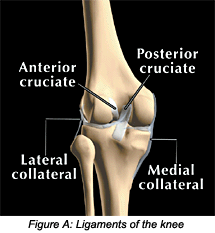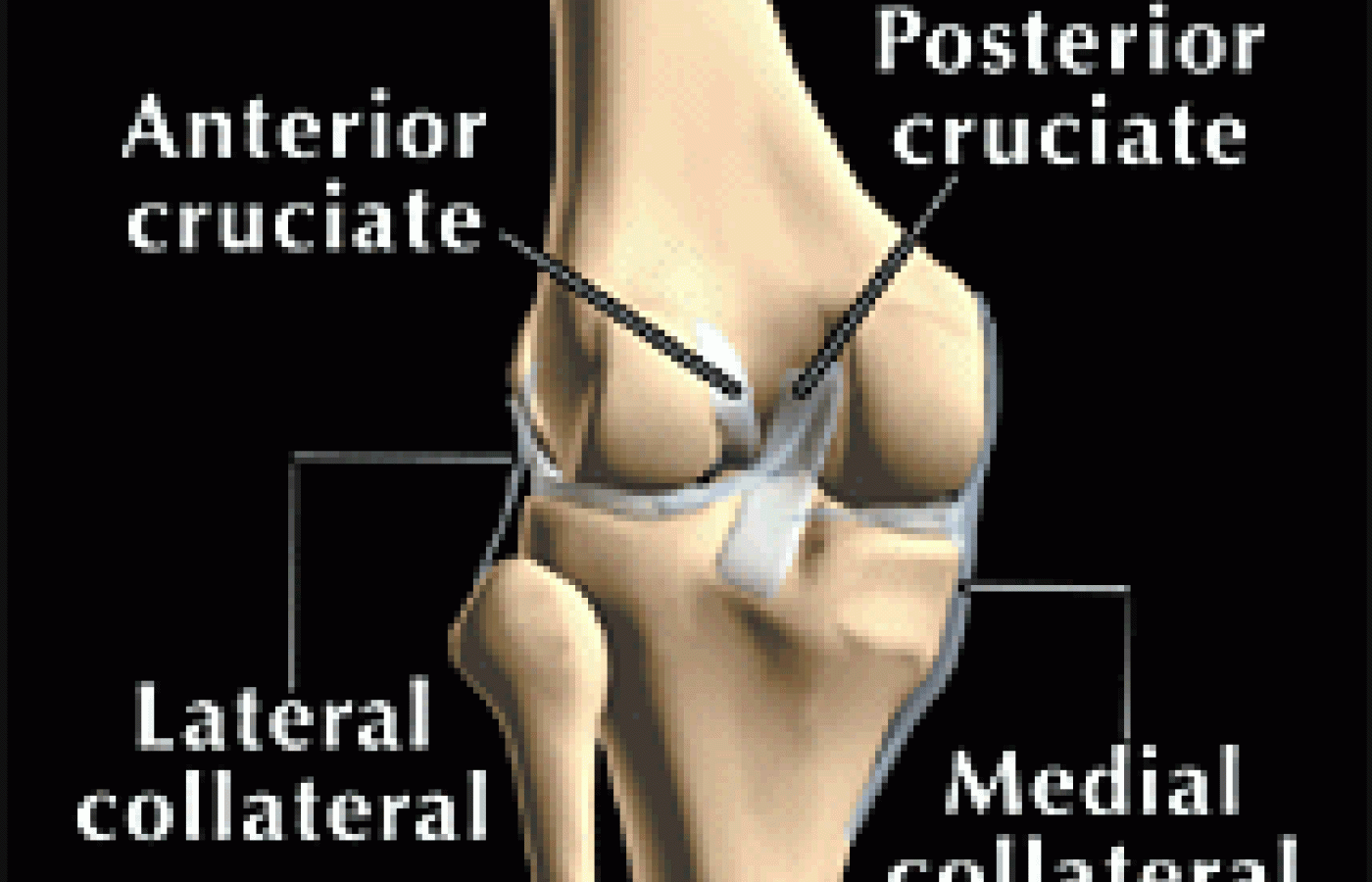Some doctors thrive in a personality-based clinic and have a loyal following no matter what services or equipment they offer, but for most chiropractic offices who are trying to grow and expand, new equipment purchases help us stay relevant and continue to service our client base in the best, most up-to-date manner possible. So, regarding equipment purchasing: should you lease, get a bank loan, or pay cash?
Women in Sports, Q Angle, and ACL Injuries
There has been a growing interest in women's athletics, from softball, basketball and volleyball to soccer, gymnastics and track. Recently, young girls have started to participate in more athletic events, which used to be dominated by boys and young men. A few years ago, women were considered to play a slower, more defensive style of sports. However, today they are more competitive: Women are trying to get scholarships and professional contracts, or win events that will bring them financial gain and the opportunity for endorsements by big-name companies. This has caused women to play with more power and speed. Their greater participation and intensity of play has increased the level of interest in health and medical issues specific to female athletes.
Recent studies have shown that female athletes have a greater susceptibility to injuries of the anterior cruciate ligament (ACL) when compared with male athletes. The National Collegiate Athletic Association (NCAA) gathered statistics over a three-year period in the early 1990s comparing incidents of injuries of men to women.1 The NCAA study showed that women suffered ACL injuries four times more often in basketball; three times more often in gymnastics; and two-and-a-half times more often in soccer. This has concerned chiropractors, orthopedists, athletic trainers and physical therapists as to what they can do to prevent those injuries, and how to better treat those injuries when they do occur.
Some of the suggested reasons women have more ACL injuries are that they have a narrower femoral notch; increased Q angle; increased ligament laxity; inadequate strength; and impaired neuromuscular coordination. Other factors to consider are the technique and skill of the player; improper shoe wear; and the type of playing surface. These all may contribute to incidents of injuries to female athletes.

The femoral notch is the space at the bottom of the femur through which the ACL runs. When doing comparative studies, it was found that this notch was narrower in females than males. Some feel that the tighter fit may cause a shearing effect on the ACL by the femur. (See Figure A.)
"Q angle" is an abbreviation for the quadriceps femoris muscle angle. In a standing position, this angle is derived by drawing a line from the anterior superior iliac spine to the center of the patella.2 A second line is drawn from the center of the patella to the tibial tubercle. The normal angle in males is 13o and 18o in females.3 (See Figure B.) This angle is increased in females due to their wider pelvis. (See Figure C.)


Anatomically, a woman's knee is made with a naturally greater Q angle between the femur and the tibia, predisposing it to greater stress due to the torsion applied between the femur and the tibia. When examining the knee, close attention needs to be placed on the biomechanics of its function and the knee alignment. When alignment problems are found, adjustments should be made to correct these problems and reduce the stress being placed on the knee. We all know that when the alignment of our car is not right, it will not handle as well; we usually can't drive as fast; the tires wear unevenly; and other components of the car's functions are affected. Similarly, knees with alignment problems will not perform as well, could show excessive wear, and may affect other areas of the body.
Furthermore, the increased Q angle causes the quadriceps to pull on the patella, which will encourage it to displace. The patella/patellar tendon ratio should be nearly equal. When the patellar tendon is excessively long, a high-riding patella exists and lateral displacement of the patella may occur easily.4 Again, adjustments to the patella may need to be addressed in this situation.
The increased Q angle also causes the feet to be more pronated and flattened.5 However, some have wondered if a pronated and flattened foot increases the Q angle. Whether or not the Q angle was the cause or result, recent studies have shown that custom-made, flexible orthotics will reduce pronation, put less stress on the knee, and improve the Q angle. The foot will also function better with a properly fitted orthotic because it will allow the subtalar joint to function more effectively. The body will then require less effort for forward propulsion and provide for improved shock absorption.
Strength and agility training are also very important for female athletes. Boys have historically been trained from an early age in activities that increase their strength, agility and hand-eye coordination. Typically, young girls are at a disadvantage when they decide they want to play sports at an older age, because their lack of coordination and agility puts them at a greater propensity to injury. Noncompetitive balance and agility training, using a wobble board or similar device, may enhance proprioceptive function and help reduce the rate of injury.
Hormonal issues also are important in explaining a female athlete's susceptibility to injury. A lack of circulating androgens discourages the development of large and more powerful muscles, which act as a protective mechanism for the joints. Ideally, the quadriceps muscles should be twice as strong as the hamstrings. When there is an imbalance, the ACL is more susceptible to tearing. Also, estrogens increased during the menstrual cycle, increase the laxity in connective tissue, and may make the female athlete more susceptible to an injury during those times. The estrogens also provide more endurance, which will allow female athletes to put longer periods of stress on their joints. Because of the increased body fat ratio of a female, stress on the joints is increased.
The ACL is most often injured with a jump or an abrupt change in direction, which happens about seven times more frequently during a game or competition because of the increased intensity. Athletes who have injured the ACL usually describe it as a popping sensation, followed by swelling a couple of hours later, and a feeling that something is wrong. Today, with advanced surgical techniques and rehabilitation procedures, the recovery period for ACL injuries has been shortened.
In conclusion, it is a fact that women athletes are four to six times more prone to injuries of the ACL than male counterparts playing the same sports. The biggest reason for more injuries is due to anatomical differences, the Q angle being the most significant. If you treat female athletes, it's important that you check them for foot pronation problems and have them wear custom-made orthotics.6 In addition, you should check the knee for biomechanical or alignment problems and apply the appropriate adjustments. Instruct athletes in a program of proprioceptive neuromuscular education using a wobble board or similar device. Stress the importance of building up the quadriceps and hamstring muscles to support the knee. Because of a lack of nutrients, it is important to have supplements that support a woman's normal hormone cycles and reduce the changes of elevated hormone levels. When these techniques are followed, women can participate in athletics with less susceptibility to injury.
References
- Knee injury patterns among men and women in collegiate basketball and soccer. Elizabeth Arendt, MD and Randall Dick, MS. American Journal of Sports Medicine, Vol. 23, No. E, 1995.
- Orthopedics: Principles and Their Application. Samuel L. Turek, pp. 1337-1338, Philadelphia, J.B. Lippincott Company, 1967.
- Illustrated Orthopedic Physical Assessment, 2nd edition. Ronald Evans, p. 804, St. Louis, Missouri, Mosby Inc., 2001.
- Diagnosis and Treatment of the Lower Extremities. Don Winkel, p. 235, Gaithersburg, MD, Aspen, 1997.
- The Lower Extremity and Spine in Sports Medicine, volume 2. James A. Nicholas and Elliot B. Hirshman, p. 1567 & 1540, St. Louis, Missouri, Mosby, 1995.
- The effect of the quadriceps femoris angle with the insertion of an orthotic device. D. Robert Kuhn, DC, DACBR; Anton Cherry, BSc; Michael Golab, BSc; Sean Rodgers, BSc. Accepted for publication.
William Austin, DC, CCSP, CCRD
Roanoke, Virginia



